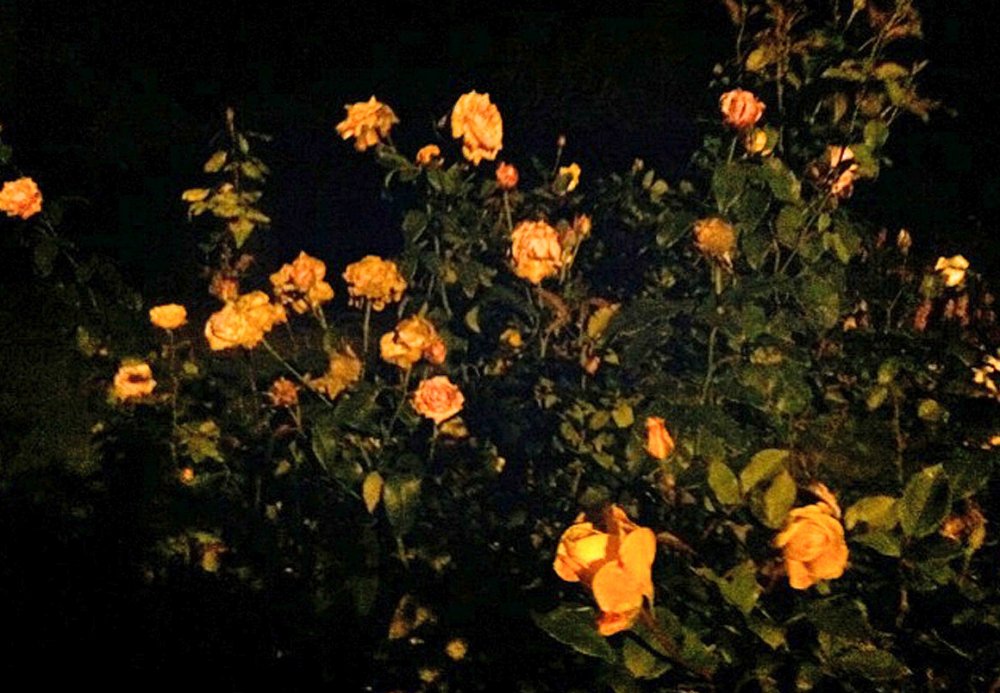
‘Nathaniel Dorsky has a tendency, during the talkbacks that often follow screenings of his short films, to answer a question with a second one: “What do you think?” “How did that shot seem to you?” Audience Q&As more often fit the description Dorsky used for bad conversation in his 2003 book Devotional Cinema—“an exhausting exchange of self-confirming, predigested concepts”—and his way of running them helps suggest what makes him such a distinctive, unorthodox filmmaker. Dorsky often compares his cinematic methods to the work of keeping up a conversation. Both involve the preservation of delicate equilibriums and the sustaining of carefully chosen tones. Both have the potential, as Dorsky wrote in the same passage, “to be balanced or unbalanced,” and both involve handling people with graciousness and care.
‘It’s always been one of Dorsky’s primary concerns as a filmmaker to “be a good host,” as he has put it. Across his works, no individual image can call attention to itself too loudly or recede too indistinctly into the whole. No excess of attention can be directed toward either the urban bustle of San Francisco, where Dorsky lives and works, or the city’s bucolic forests and wooded areas, where he often shoots. To watch nearly any Dorsky film is to be guided through a pattern of hushed, suspended, illuminated visions: light emerging through curtains and bending through glass; light deflected by the surfaces of tables and the bodies of cars; light caught by fabric; light distorted as it passes through water, windows, optical filters, or translucent rocks; light moving across faces, shoulders, and hair; light glittering across the surface of a receding tide; light striking jewels and strings of beads; moonlight muffled and darkened by clouds; sunlight fringing buds and shoots of grass. In their rhythms, textures, and distributions of light, these are unfailingly courteous films—experiments in how hospitable and accommodating moving images can be.
‘The nine 16mm films Dorsky made before he finished Triste (96) vary widely in format and style. The 23 films he’s released since are no less tonally diverse, but they have undeniable common ground. These later works are all silent; most hover around 20 minutes in length. (At the outskirts are Arbor Vitae, made between 1999 and 2000, at 28 minutes, and 2010’s Aubade, at just under 12.) They all move at 18 frames per second, which Dorsky has variably called “silent speed” and “sacred speed.” Certain subjects catch Dorsky’s eye repeatedly in the films he’s made since Triste: transparent, reflective surfaces like windows or glass doors; bodies of freshwater; storefront displays; meadows in bloom; café patrons, commuters, and people in the street; amateur sports games; cats; tree branches; cloud formations; birds. Sometimes, he’ll introduce a radically foreign object into his films: a buttressed, torchlit temple pool in Spring (13); a pod-like room that resembles the interior of a space shuttle in Pastourelle (10). And yet even when he returns to a familiar image, Dorsky never films anything exactly the same way twice. A shot in Variations (92-98) of the moon emerging from behind a layer of cloud carries a radically different tonal charge than does a much tighter shot of the same subject in The Visitation (02), in which the moon’s emergence registers less as a softening, consoling presence than as a threatening omen. Both suggest different states of mind than the shot midway through Threnody (04) of the moon reflected in a storefront window over a mannequin’s shrouded eye, or the shots of moonlit clouds that pile on one another breathlessly in the last seconds of Compline (09). When the moon appears in Summer (13), it’s sheathed in clouds that fly across the screen in time-lapse; when it enters Hours for Jerome (66-70/82), one of his earliest,it’s as a flickering, latticed orb that looks at first glance like a patch of light seen through a circular viewfinder.
‘Each of Dorsky’s shots can be taken as a reaction against the one before it. Overpowering images like the vision of the receding tide near the end of The Visitation or the virtuosic first shot of Song (13), in which a reflected frame-within-the-frame literally flies into full view at the closing of a door, have to be buffered by humbler shots of people, animals, or plants, or by murkier, blurrier shots that make fewer demands on the eye. The concluding sequence of Song and Solitude (05-06), for instance, shows a low-contrast image of a cat gazing out of a window; a vertiginous close-up of a preening mannequin in a boutique display lit by shimmering green reflections; a casual glimpse of birds pecking at an unfinished lunch; a dim image of tree branches swaying against a dusk sky; and a flurry of quick, high-exposure shots of white almond blossoms quivering in the wind. One imagines Dorsky deciding that the image of the mannequin and the subsequent volley of shots needed to be separated by an image less lofty and ethereal (the hungry birds), and then cushioned by a more neutral shot on which the eye could rest (the branches). Dorsky has referred to cuts as “refreshments of receptivity.” Watch enough of his films, and it’s easy to lose your tolerance for movies that treat their viewers’ receptivity as an inexhaustible resource—films that bully, rant, aggress, or lapse into monologue.’ — Max Nelson
___
Stills
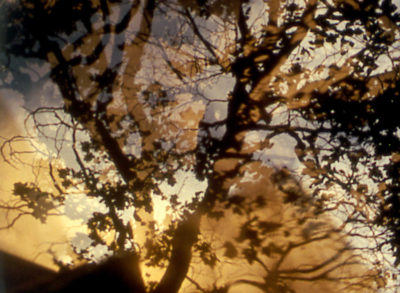


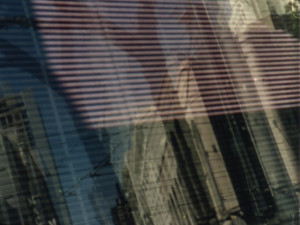

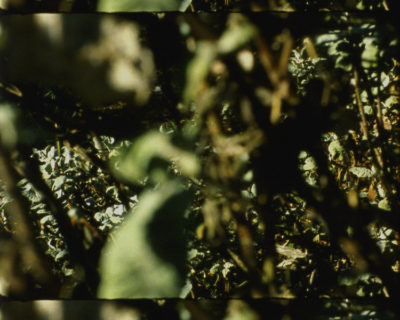
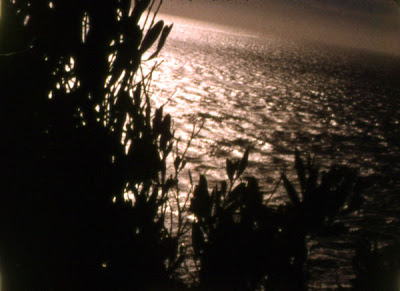
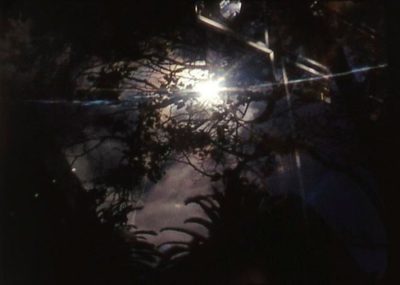

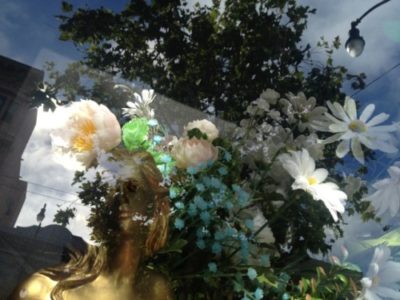


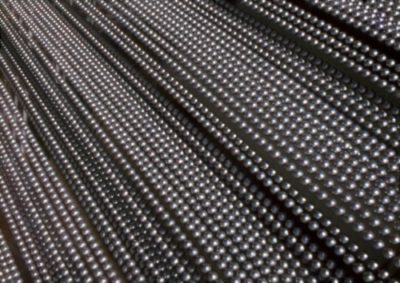
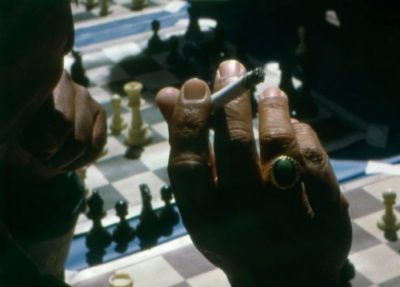

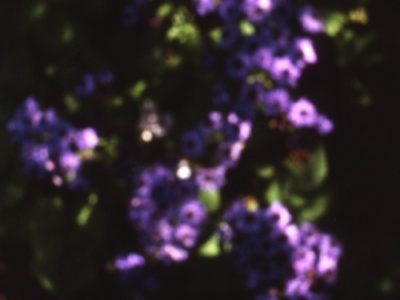
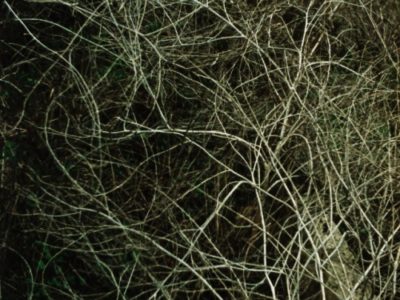
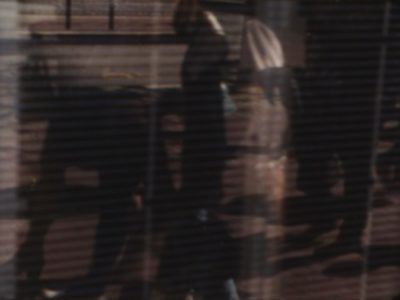
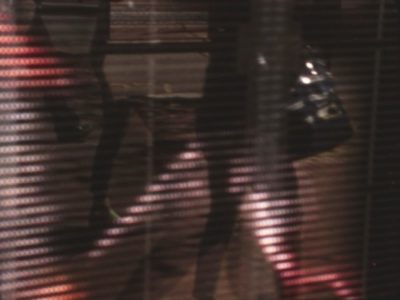



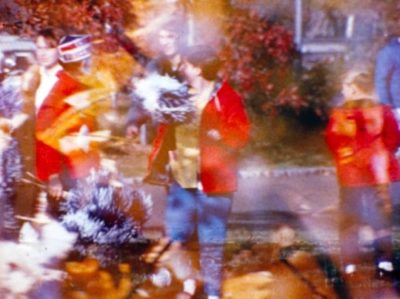
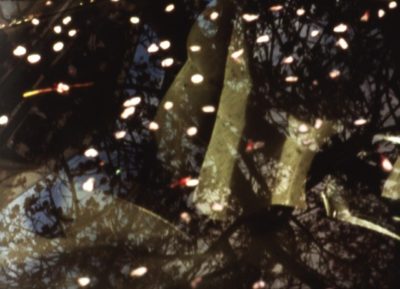

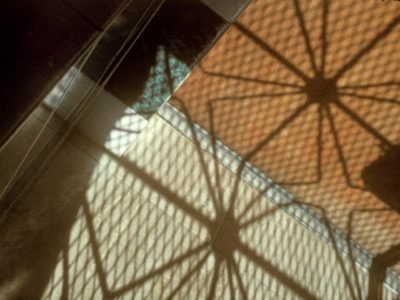
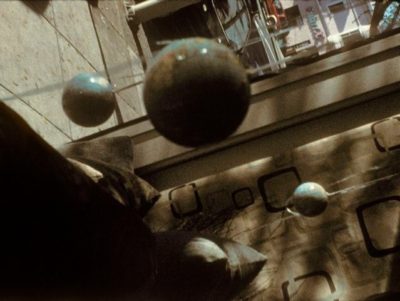
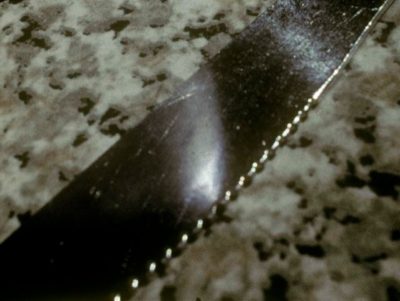
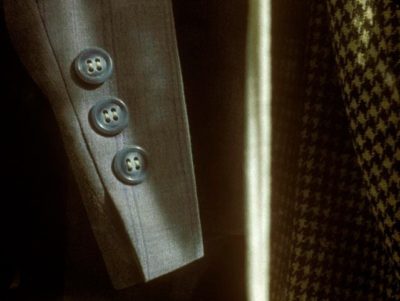

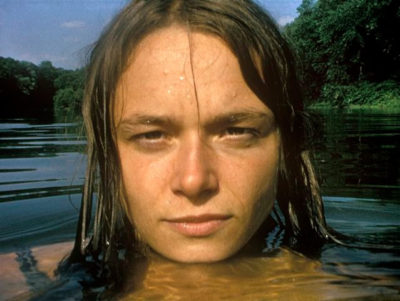

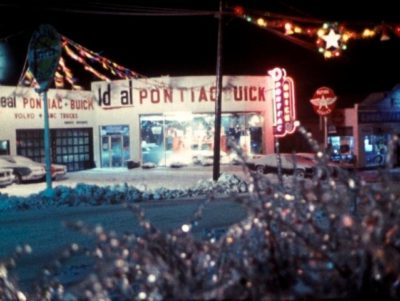
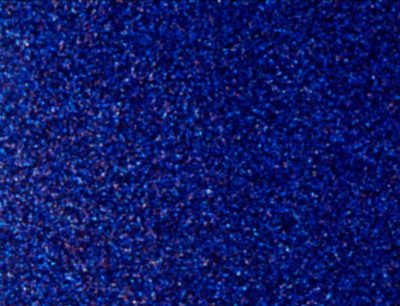
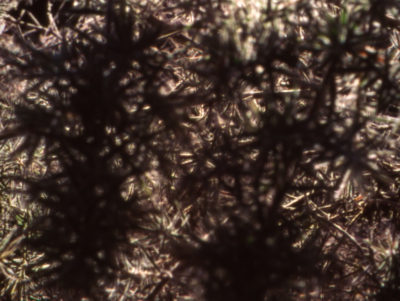
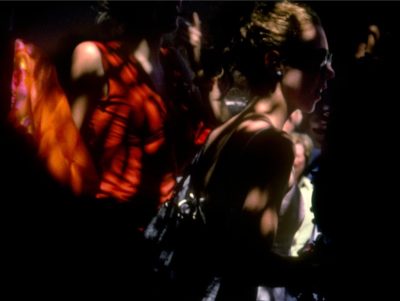
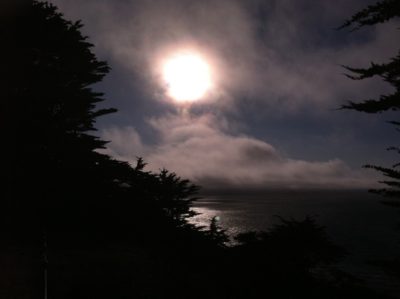

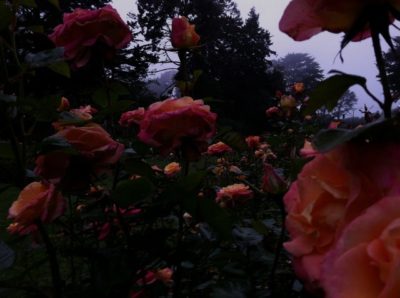

___
Further
Nathaniel Dorsky Site
ND @ Twitter
ND @ IMDb
ND @ Canyon Cinema
ND @ Light Cone
ND @ Anglim Gilbert Gallery
Book: NATHANIEL DORSKY: DEVOTIONAL CINEMA
Nathaniel Dorsky’s Arboretum Cycle: the photosynthesis of film
PRACTICE OF LIVING WITH TREES IN NATHANIEL DORSKY’S THE ARBORETUM CYCLE
The Inmost Leaf: An Interview with Nathaniel Dorsky
CONVERSATION WITH NATHANIEL DORSKY
Heavenly Host
Ecstasy on film
Notebook Nathaniel Dorsky @ MUBI
Video: Nathaniel Dorsky: An Interview @ Video Data Bank
Nathaniel Dorsky, Jerome Hiler, and the Polyvalent Film
Nathaniel Dorsky – MAKING LIGHT OF IT
The Sacred Wood: Nathaniel Dorsky’s Arboretum Cycle
Nathaniel Dorsky’s Arboretum Cycle Is Light as a Feather
Meditations on Film: Nathaniel Dorsky by Ari Spool
Last night, the REDCAT screened some works by avant-garde filmmaker Nathaniel Dorsky …
The short films of Nathaniel Dorsky: better than Avatar
____
Extras
Four Films by Nathaniel Dorsky & Jerome Hiler | Q&A
Nathaniel Dorsky’s introduction to two films by Stan Brakhage
Nathaniel Dorsky Q&A | NYFF53
Critics’ Talk #1: Nathaniel Dorsky
_____
Nathaniel Dorsky explains why his 16mm films remain only on celluloid
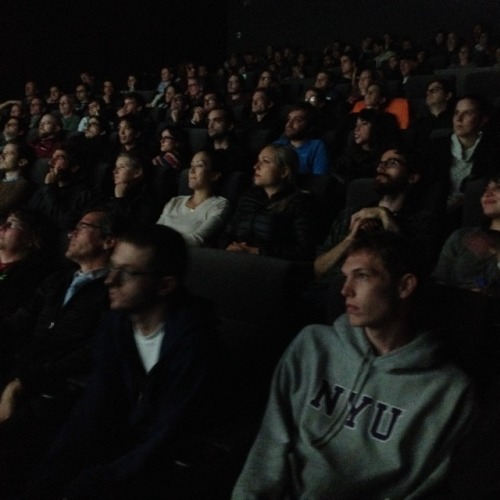
My films only exist as 16mm film prints and are available to the public for rental at Canyon Cinema in San Francisco and Light Cone in Paris. I have kept them in their original and intended format as I feel that that is what they actually are and should be screened as such. Any digitizing of them would be a reproduction or reduction of them and not the original experience that I have intended. I find the more humane quality of light and the warmth and body of the physical image of celluloid projection to be essential to how my films communicate. My films speak to the body of the viewer and the digitization of them removes their more weighty physical presence and limits their ability to communicate or function as I have intended. Shifts of weight on the cut are an important part of my articulation.
I know that keeping them exclusively as film prints has greatly reduced my audience, but I sincerely feel that this sacrifice is worth the preciousness of what is preserved. My film shows have become more like live performances or perhaps like going to a museum and seeing an actual painting rather than a reproduction as such. Seeing the actual painting is to be in touch with the very eros of a work. How often have I fallen in love with a painting in real life and then seen a reproduction of the painting. Yes, some basic information is translated but the actual thing one loved has vanished.
Technologies, of course, are improving year to year. Now there are 2K and 4k scans of each 16mm frame in order to reproduce the look of the original celluloid moving image. But other problems have emerged. My films are projected at silent speed, or 18 frames per second. Blu-ray cannot perform cinema at this speed and I do not believe that the very rare and extremely expensive 4K projectors can do this at this point in time.
So for now I cherish the physicality of 16mm film projection. It is like an acoustic instrument. I love its body and warmth, its vulnerability and intimacy, its tenderness and earthiness. I can only hope that my fans will continue to be able to travel to see my film shows and that we can all participate in something quite special and rewarding midst a rapidly changing world.
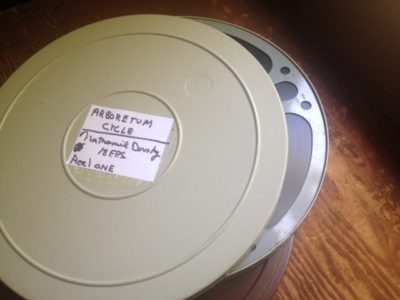
_____
Interview
from Film Comment

At last year’s Whitney Biennial, you said something to the effect that your films were “about aloneness, and about sharing aloneness with the audience.” Do you shoot with an eye towards sharing your private, solitary experiences with others, or do you prefer to get lost in your own perceptions and hope that something relatable will come out?
The second. It isn’t that you’re trying to express aloneness, because then that wouldn’t be aloneness. You would only be expressing a concept of aloneness. Because in English the word “lonely” and “alone” are somewhat similar, they get confused. They’re actually quite different. “Lonely” refers to believing in yourself as separate from the world. You’re lonely because you’re separate from the world, or from other things. Aloneness is a realization that everyone is in the same boat; that everyone is actually alone. One of the deepest and most magical mysteries of human life is that we’re alone, and yet we’re together. Everyone we see around us in this courtyard [gestures around] is the center of their own world, has their own set of problems with their relatives, with their job, with their roommates, with their lovers, with their childhood. Everyone has their own huge drama, and yet all these dramas overlap in the same space of human interaction. We’re all mutually alone.
In literature, everyone is very used to the idea of a novelistic form, which is usually a third-person form involving characters who have problems and resolve them, or not. On the whole, poetry has not been a third-person form. None of these are absolute by any means, but poetry tends to be more an expression of individual mystery. It’s the same thing in film. Because making film is expensive, film was used primarily for third-person dramatic purposes, because it was commercially more viable. There was more return for your money. At the same time, the film industry which came out of that situation enabled people with more poetic inclinations to use film as poetry. I guess this goes all the way back to Méliès, and the whole French lineage in the Twenties and Thirties.
I feel that I’m very much part of this poetic lineage: a cinema that is about aloneness. At a certain point in life, I think you realize—or discover—that the more intimate you are, the more you reveal your innermost secrets, the more universal you become. You’re being true to your core, and that core is not so basically different from other people’s cores. So to be a filmmaker, then, you have to have the faith that your own vision can be comprehended by other people. If you’re trying to make films for other people, you’re in trouble. In most of the films—especially, of course, films that are based on the return of capital—every effort is made to make the film for other people. It’s very seldom, except with the supreme geniuses of narrative form, that any kind of truth or vulnerability comes out. Rossellini, Ozu, Bresson, to name a few, have had that courage to express themselves as who they are. That’s the beginning of an answer.
It’s an interesting paradox, that you have to dive very deep into yourself to arrive at something that can be shared with others—and something that others share.
Otherwise you’re manipulating others, or showing off for others. So many films, especially in the experimental realm, have one idea, and the film just goes on and on: “Here’s my idea.” There are also many films which are less meaningful to me because the moves made on them come from the outside. The filmmaker is always outside the film declaring the next thing, as opposed to letting something that’s established in the film declare the next thing. When, as a filmmaker, you’re always declaring the next thing externally, pushing the film; when your hand is always coming in and moving the film this way and that way, you can be very impressive, like a juggler, but you’re actually not helping the people. Ultimately, you’re distracting and depressing them. It can be magical and wonderful and thrilling. But there’s something about allowing the vulnerability of a film to unfold out of its own needs that goes deeper.
Is the distinction maybe that in some films, each new development is driven by the film’s own internal logic, whereas in others each new development doesn’t follow necessarily from what came before?
Yes. For instance, during the period of the Ingrid Bergman films, Rossellini was well known for not having a script, for writing the dialogue in the moment. He was in the situation and had the trust to let the magic ferment and happen.
For me at least, though, some of the most transcendent moments in cinema are the result of a director imposing something onto the film that wasn’t there to begin with. I’m thinking of the end of Voyage to Italy, for instance. It seems as if the movie’s logic doesn’t allow for that final moment of reconciliation; it has to be imposed from outside. It’s a miracle in some way.
And it’s a strange miracle. The film is basically a long argument, but it lets that argument resolve in a way that’s pretty much within the established language of cinema: a couple kissing. It’s a strange moment, because you believe it and you don’t believe it. Then, of course, he cuts to a final shot, a shot of almost nothing: some kind of a capitano standing off to the side, with people walking back and forth in front of him. It’s a very emotional moment for me. Then the film continues as black leader, and the music also continues for at least another half minute or more, in black. So it isn’t that he tried to manipulate you, that he hermetically sealed up that manipulation and gave it to you as a closed package which you had to buy. It’s much more open and interesting than that. It’s quite true to life.
He lets the miracle ripple out in the world.
In the black leader, yeah.
Do you always edit alone?
Usually when I’m almost finished, or when I feel that it’s pretty close, I have two to four different friends who I’ll show it to individually. They’re usually friends who I can reveal myself to without feeling at all self-conscious. Not an iota of that, or it wouldn’t work. Just looking at the film with another person is a little bit like a bullshit test: when the other person is there, the little lies you tell yourself become more apparent. When you’re editing a film, you have to be very truthful to yourself. Very truthful. We all lie to ourselves. We cut to something and we wish it was good. It’s almost good, and we want it to be good, because if it was good it would be very convenient. Those little lies are very subtle, and whenever one remains in one of my films, it’s like [makes sharp, rebuking alarm noise, like a buzzer going off].
For instance, there’s a shot I would take out of Song. It’s something I added near the end, and it would have been quite complicated and expensive to take out. I just said, well, I’ll leave it there for a while. It’s similar in life—if you’re in a relationship, for instance, it’s like every time you fake slightly, every time you say “yes, dear,” or something. Film is a kind of exaggerated mirror of yourself. All you can really do is try to be honest and then look at that honesty, and the film will give you the feedback right away. Filmmakers who don’t improve, I always think that they don’t see their films honestly. How could you see that and honestly think that’s worthy? You know that’s dishonest.
This kind of honesty seems to me like a necessary condition for the type of open sharing and communication you spoke about earlier. But what we’ve been circling around is to what extent that type of communication is possible, when it often tends to involve subsuming each person’s individual experience under concepts that don’t really fit it. How do you think your films address this problem?
I think that first of all, you have to establish the image. And if you establish an image which is in essence a visual representation of an idea, you’re already in trouble. In terms of film narrative, there’s obviously a logic to the progression; in that case, your honesty is to a place, and to the nature of human character. That’s where your honesty has to be, and where you have to control your own vanity: say, by passing up the chance to take a great shot when it wouldn’t be intrinsic to the need of the characters or the story, or by letting things decay into violence—something all too common in film now. But in film poetry, what I’ve come upon is that as soon as an image is in itself an image of something, then it’s already connected to concept and language. Steve Anker, who ran the San Francisco Cinematheque for maybe 25 years, said to me once—I hate to say this kind of thing but he said: “Why were you the first person to actually make a film that was actually visual? It seems so obvious!” Of course, many films are highly visual in some sense, but their basic organizing principle and driving force is not visual.
Now, this is a delicate, subtle subject. But let’s take Stan Brakhage, who for me is a great paternal example of individual filmmaking. I first saw him when I was nineteen and he was speaking at a film show at midnight at the Bleecker Street Cinema. With Stan, there are areas of kinesthetic magic and accomplishment, which are just extraordinary and totally unapproachable, and then sometimes there’s a level of meaning which all the visual stuff rests on or is expressive of. And occasionally, I don’t feel it’s completely integrated. It’s compatible, but there are occasional points when the pure cinematic areas become exemplars of the meaning. One is walking a razor’s edge as a filmmaker, and it is easy to fall from the sublime to the effortful. Sometimes I feel that with Stan, the visual elements and the meaning are not of the same world. And then at other times, they’re unified in a way that no one else could do.
As for myself, I was trying to see if there was a way I could take meaning, which was at the same time vision, and not have the vision be an ornament to meaning. The vision had to be meaning, but it also still had to be vision.
When I came upon Stan, he was only 10 years older than I was, but had already made Anticipation of the Night, Window Water Baby Moving, Sirius Remembered, and…
The Dead?
The Dead, yeah. And wow, the prelude to Dog Star Man. So he was already quite something, to say the least. I was drawn to the romantic idea that one person could go out with a camera and sing their song. That was very inspiring: if you had a couple hundred bucks, you could make a film. At the same time, I was learning about world cinema. I was a projectionist at a course at the New School for about three years in a row. It was taught by a very wonderful man named Joseph Goldberg, and it was kind of a world survey of film which was at that time considered very significant. I was seeing things like Pather Panchali and My Darling Clementine, Dreyer’s Joan of Arc, Rossellini’s Paisan, great films. I was drawn by the depth of heart in these movies: how spacious they were.
I was really torn between these two things. It was like Apollo being pulled by two horses. There was this individual, poetic, romantic Brakhagean kind of first-person self-expression, and then there was this other thing which had to do with extreme compassion and tenderness of heart. They seemed like two different things to me. I got genuinely confused. I think that my filmmaking, not by intent but by circumstance, has been—I didn’t realize this till late; it wasn’t a self-conscious thing, believe me—some attempt to bring together those two lineages.
____________
20 of Nathaniel Dorsky’s 47 films
_____________
Interlude (2019)
‘A brief lost moment lies between. My shortest work in decades.’ — N.D.

______________
Apricity (2019)
‘The title Apricity refers to the warmth of the sun in winter. It is an homage to the writer Jane (Brakhage) Wodening. In speaking to her I mused, “perhaps your age is the winter and you are the warmth of the sun.”’ — N.D.
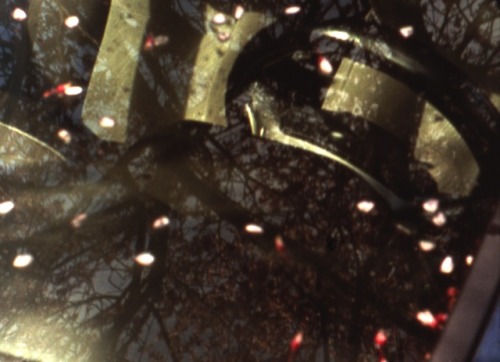
________________
Colophon (for the Arboretum Cycle) (2018)
‘A coda to a recent suite of films, as much as a singular work in itself, Nathaniel Dorsky’s Colophon (For the Arboretum Cycle) is a stunning, stirring triptych that gestures to Chinese landscape scrolls. A programme of ruins and resilience, of endnotes and epiphanies.’ — TIFF
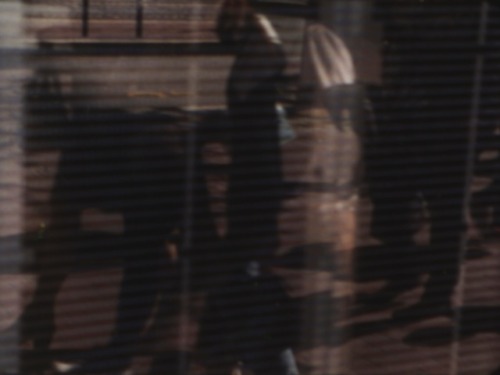
________________
The Arboretum Cycle: Elohim, Abaton, Coda, Ode, September, Monody, and Epilogue (2017)
‘For the past several years California experienced an extreme drought. But this past winter good fortune brought a bountiful amount of storms and liquid refreshment. The spring that followed took on magical and celebratory qualities of energy, joy, fullness, and rebirth.
‘In walking distance from my apartment is San Francisco’s Arboretum located in Golden Gate Park. I decided that I would make a film now on a single subject and that subject would be the light – not the objects, but the sacredness of the light itself in this splendid garden. What I did not know is that the great beauty of this magnificent spring would bring forth not one, but seven films, each one immediately following the previous. I began to photograph on the second week of February and finished the editing of the seventh film during the last days of December.
‘These seven films spontaneously manifested as the stages of life: early childhood, youth, maturity, old age, and death. Elohim was photographed in early spring, the week of the lunar new year, the very spirit of creation. Abaton was photographed a few weeks later in the full ripeness of spring, the very purity and intoxication of passion. Coda was photographed in late spring, in the aftermath of this purity, the first shades of mortality and knowledge.
‘Ode, photographed in early summer, is a soft textured song of the fallen, the dissonant reds of death, seeds, and rebirth. September is indeed, Indian summer, the halcyon swan song of earthly blessings. Monody, shot in the fading autumnal glory is an energized declaration of the end. And Epilogue, photographed in early December, rests in quietude, the garden’s energy now descending into the dark, damp earth.
‘This spacing of the seven films onto three reels allows for each of the seven sections within the Arboretum Cycle to play at their best.
‘There will be no intermissions. There will be a minute to two minute pause, audience in dark or near dark, to rethread the projector for the second and third reels.
‘The projectionist will allow the leader between films within each reel to play on the screen as an entr’acte.’ — N.D.
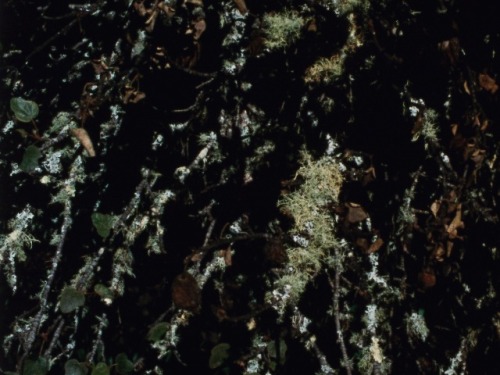
Elohim | 2017 | 31 minutes | silent speed | 18fps | 16 mm | color | silent
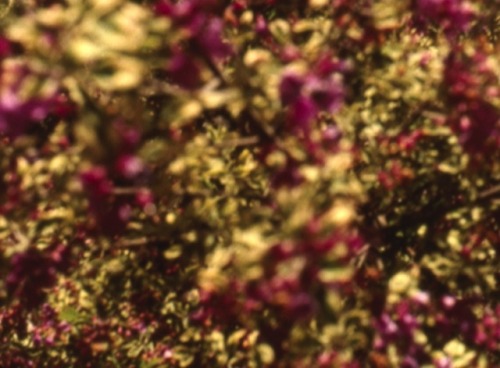
Abaton | 2017 | 19 minutes | silent speed | 18fps | 16 mm | color | silent
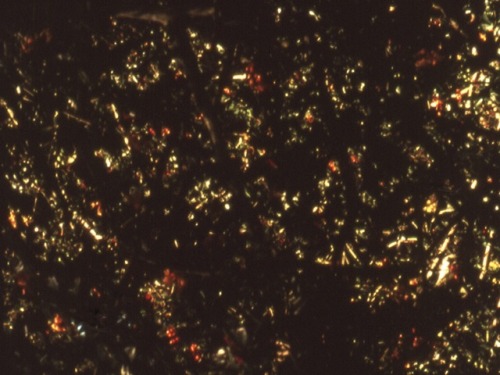
Coda | 2017 | 16 minutes | silent speed | 18fps | 16 mm | color | silent
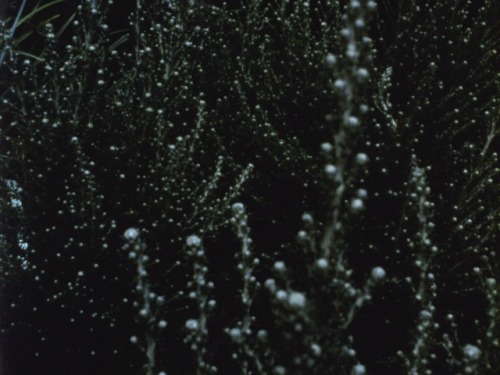
Ode | 2017 | 20 minutes | silent speed | 18fps | 16 mm | color | silent

September | 2017 | 20 minutes | silent speed | 18fps | 16 mm | color | silent
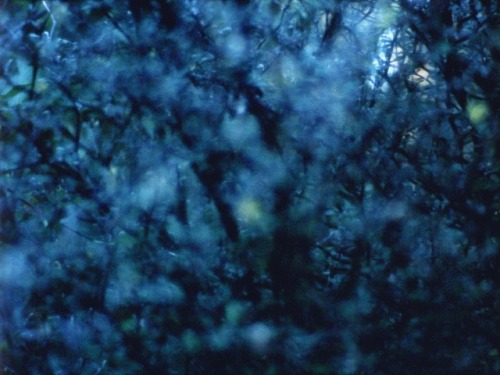
Monody | 2017 | 16 minutes | silent speed | 18fps | 16 mm | color | silent

Epilogue | 2017 | 15 minutes | silent speed | 18fps | 16 mm | color | silent
_______________
Death of a Poet (2003/2016)
‘In the spring of 2016, after editing Autumn and The Dreamer, I began to project my camera original Kodachrome outtakes of footage I had shot while making my Kodachrome films from 1992 through 2009. It was inspiring to come upon this footage from another period of time and to see material that did not fit into my needs of the moment, but in retrospect is very beautiful and well worth working with.
‘One of the most successful works in this series is Death of a Poet, which is a document from the weeks that Stan Brakhage was dying of bladder cancer. Dominic Angerame, then head of Canyon Cinema, and I went up to Victoria, Canada to visit Stan. Five weeks later while I was in Boulder, Colorado to screen my recent films, Stan passed away. There was a gathering at Stan’s daughter’s house with Jane (Brakhage) Wodening and her brother, poet, Jack Collom in Boulder. That night it began to snow and like a purification it did not stop for five days.’ — N.D.
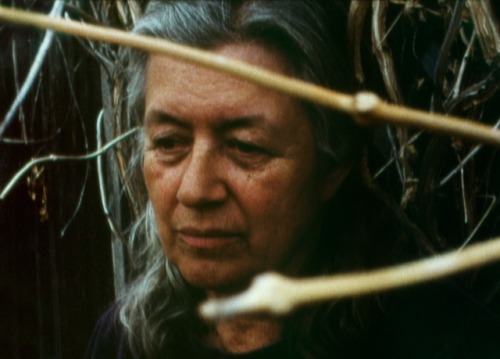
_______________
Other Archer (2003/2016)
‘A short portrait of a dear friend and collaborator on Devotional Cinema, Nick Hoff.’ — N.D.

_______________
Lux Perpetua I & 2 (2002/2016)
‘Two personal travel films, Lux Perpetua I and II were shot in Oaxaca and then in France and Italy.’ — N.D.

_______________
The Dreamer (2016)
‘This year our mid-summer’s night was adorned with a glorious full moon. The weeks and days preceding the solstice were magically alive with crisp, cool breezes, bright, warm sunlight, and a general sense of heartbreaking clarity. The Dreamer is born out of this most poignant San Francisco spring.’ — N.D.

____________
Avraham (2014)
‘In most of my films I have had the burden of adding a title afterwards. Sometimes the word or words would come automatically, but more often with great difficulty. In the case of Avraham, the title came first. It was not only the film’s inspiration but the very thing that determined every shot and every cut.’ — N.D.

____________
Summer (2013)
‘Summer in San Francisco is a dry and rainless season. The film, Summer, although photographed during this period of time, is not so much a description of summer, as it is a cinematic response to that world of our being.’ — N. D.

________
Song (2013)
‘Song was photographed in San Francisco from early October through the winter solstice in late December, 2012.’ — N. D.
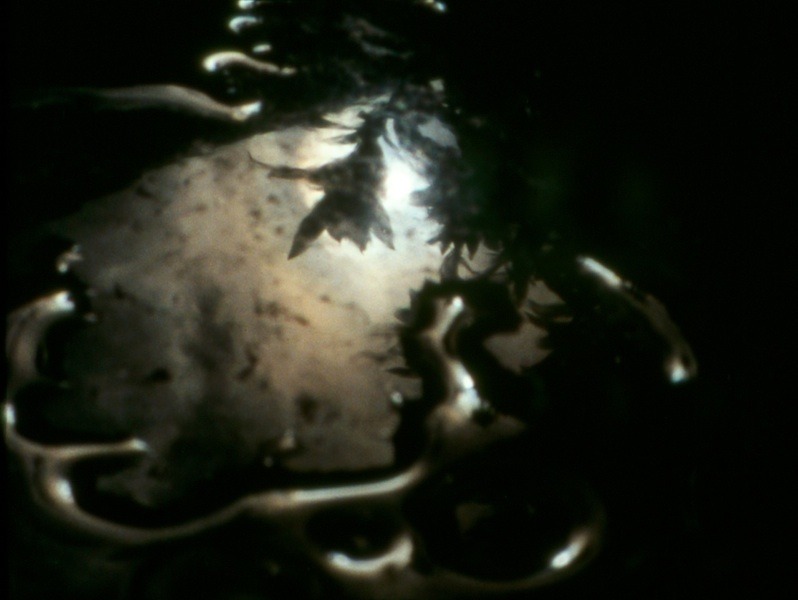
__________
The Return (2011)
‘Nathaniel Dorsky, there’s no harm in repeating it, makes unique films. Meticulous in their camerawork, editing and concentration. In silence, a dark universe unfolds, a measured structure that emerges from, but has nothing to do with, the visible world. ‘Like a memory already gone, this place of life.” — IFFR
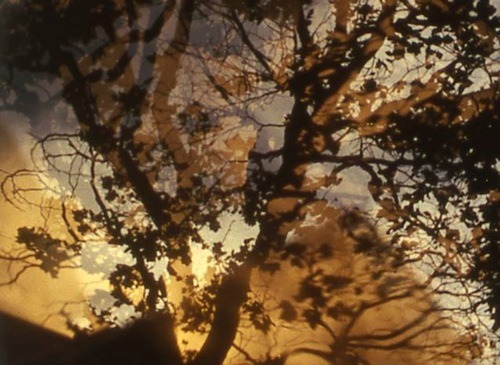
____________
Compline (2009)
‘Compline is a night devotion or prayer, the last of the canonical hours, the final act in a cycle. This film is also the last film I will be able to shoot in Kodachrome, a film stock I have shot since I was 10 years old. It is a loving duet with and a fond farewell to this noble emulsion.’ — N.D.

NATHANIEL DORSKY (VIII): COMPLINE
_____________
Kodachrome Dailies from the Time of Song and Solitude (2006)
‘What would come to be called The Kodachrome Dailies came about by pure chance and a little mystery. At some point, many years after making Song and Solitude, my laboratory called to ask if I wanted them to send me the work print for Song and Solitude. They had been clearing out some shelves and had found the two reels in a can. I responded that that was impossible because I had already edited the film a few years previously. They responded, well, it is here, and we are going to send it to you. Neither the lab nor I could remember or understand why there was another copy of this work print.
‘I received this material and put it on a shelf in my editing space. One day, a few years later, I needed some footage to put through my projector in order to trace the source of a squeaking noise that only happened when film was going through it, so I went over to my shelf and threaded up the first of the two reels of the work print from Song and Solitude. I had never looked at it after it had arrived. While listening for the annoying squeak I looked up at the screen and was shocked by the beauty of once again seeing Kodachrome images on my screen. I was transfixed and sat down and watched the entire two reels. Kodachrome had been cancelled. as we all know, and one had just been trying to forget how nice it was.
‘This is the story of these two reels of film, each 40 minutes long when projected at silent speed. They are genuinely one of a kind. There are no prints in distribution. The Kodachrome they were sourced from is still intact but Kodak has terminated the internegative stock that was used at that time to make this work print, and the internegative used for printing them has since been cut up to serve as the printing source for the edited film, Song and Solitude.
‘What is interesting about these two reels is that it is an unusual opportunity to have the informal pleasure of seeing my footage, not only unedited, but with images that were not selected for the final film and therefore never seen. There is a sense of observing the filmmaker as the observer and therefore participating in the exploration with the camera, somewhat like a painter’s sketchbook or a writer’s notebook.’ — N.D.
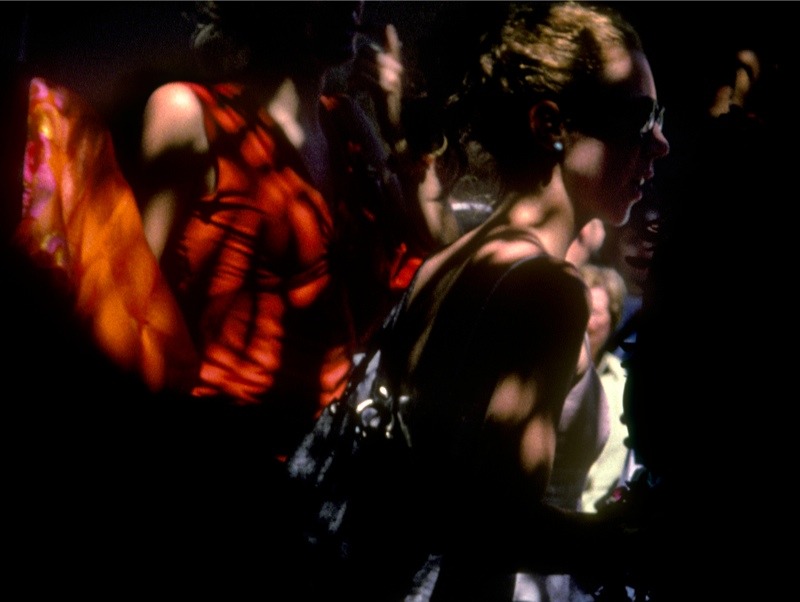
______________
Song and Solitude (2006)
‘”Song and solitude” was conceived and photographed with the loving help and kindness of susan Vigil during the last year of her life. Its blance is more toward an expression of inner landscape, or what it feels like to be, rather than an exploration of the external visual world as such.’ — Light Cone
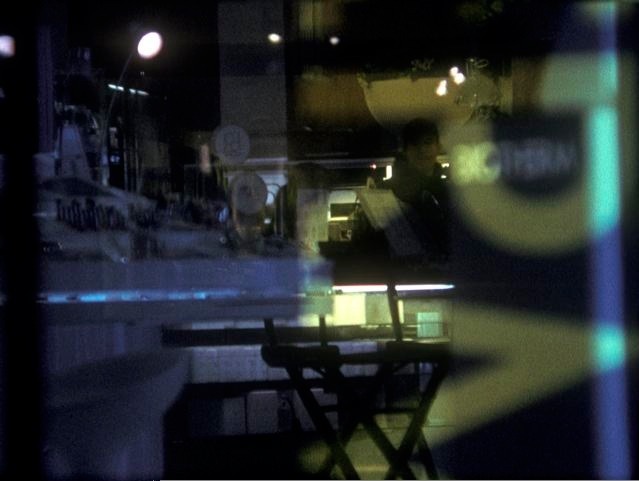
NATHANIEL DORSKY (II): SONG AND SOLITUDE
_____________
Variations (1998)
‘Variations blossomed forth while shooting additional material for Triste. What tender chaos, what current of luminous rhymes might cinema reveal unbridled from the daytime word? During the Bronze Age a variety of sanctuaries were built for curative purposes. One of the principal activities was transformative sleep. This montage speaks to that tradition.’ — N. D.
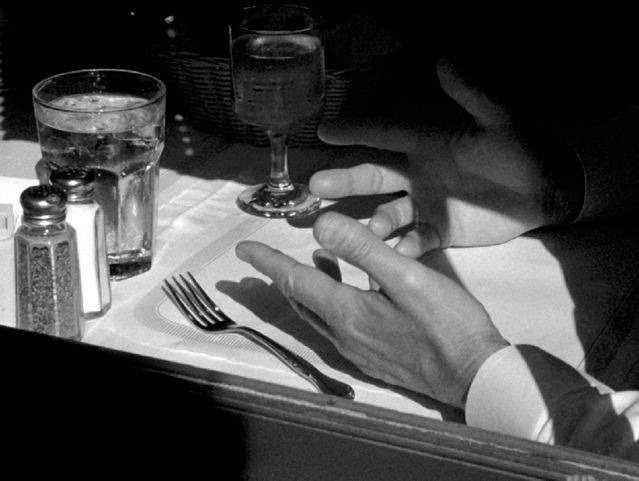
NATHANIEL DORSKY (XII): VARIATIONS
____________
17 Reasons Why (1987)
‘17 Reasons Why should ideally be projected at 16 fps. It is far more enjoyable at this slower speed. 17 Reasons Why was photographed with a variety of semi-ancient regular 8 cameras and is projected unslit as 16mm. These pocket-sized relics enabled me to walk around virtually “unseen,” exploring and improvising with the immediacy of a more spontaneous medium. The four image format has built-in contrapuntal resonances, ironies, and beauty, and in each case gives us an unpretentious look at the film frame itself … the simple and primordial delight of luminous Kodachrome and rich black and white chugging thru these timeworn gates.’ — N. D.
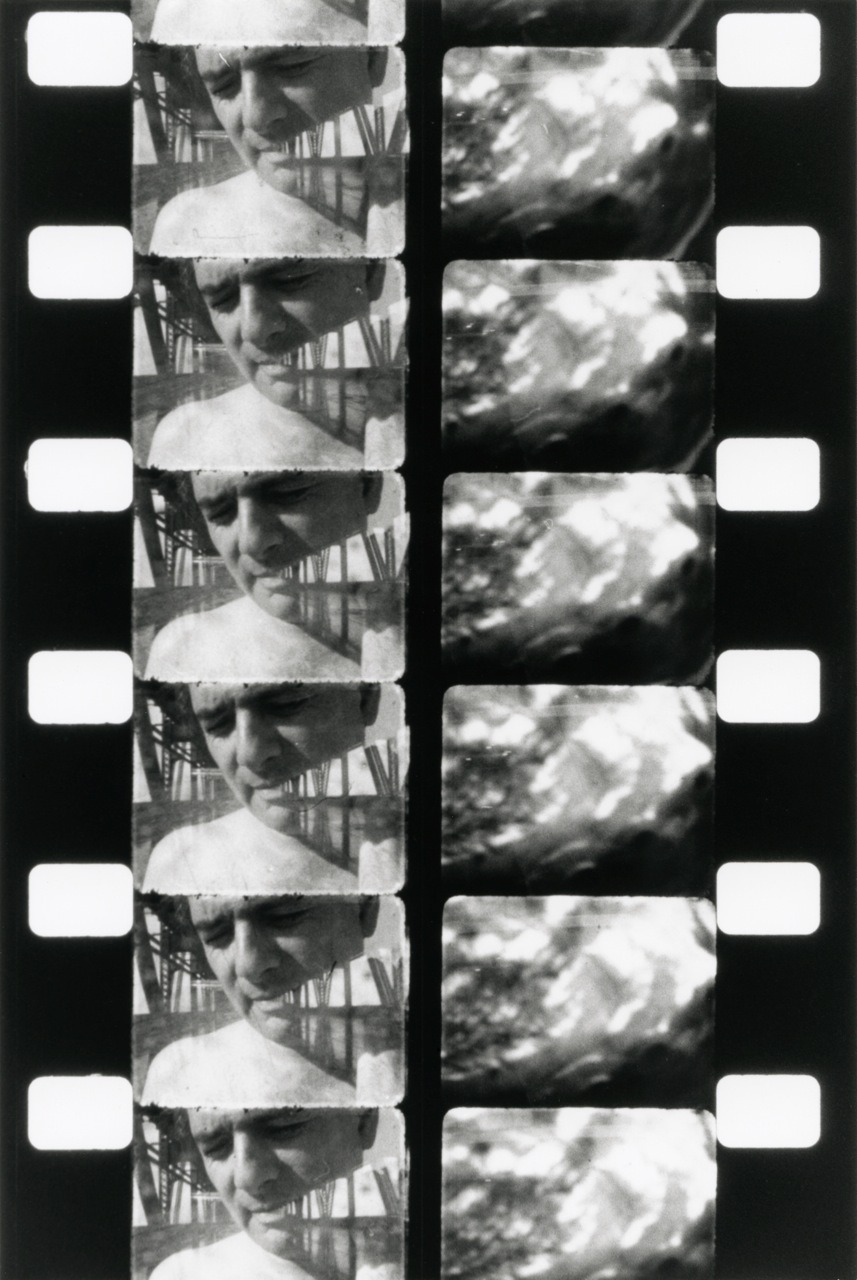
___________
Alaya (1976-87)
‘Alaya manages a perfection of ‘musical’ light across a space of time greater in length than would seem possible (consider how brief most such perfected works are, such as Peter Kubelka, say) … and with minimal means of line and tone. … After about three minutes I began to be aware of the subtlety of rhythm, within each shot and shot-to-shot, which carried each cut, causing each new image to sit in-the-light of those several previous … a little short of a miracle. Bravo!’ — Stan Brakhage
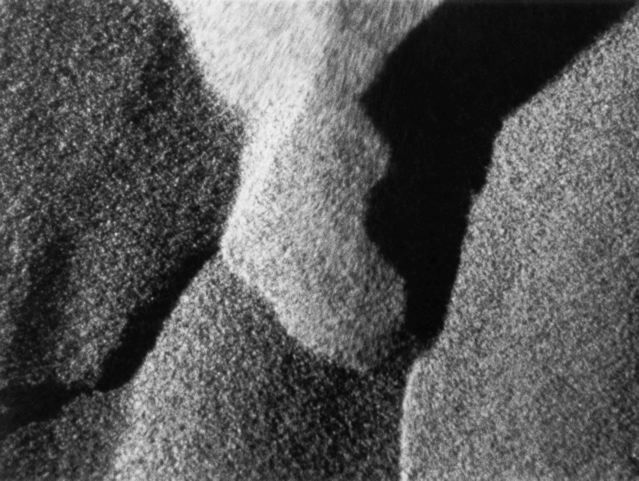
____________
Pneuma (1983)
‘In Stoic philosophy “pneuma” is the “soul” or fiery wind permeating the body, and at death survives the body but as impersonal energy. Similarly, the “world pneuma” permeates the details of the world. The images in this film come from an extensive collection of out-dated raw stock that has been processed without being exposed, and sometimes rephotographed in closer format. Each pattern of grain takes on its own emotional life, an evocation of different aspects of our own being. A world is revealed that is alive with the organic deterioration of film itself, the essence of cinema in its before-image, preconceptual purity. The present twilight of reversal reality has made this collection a fond farewell to those short-lived but hardy emulsions.’ — N. D.
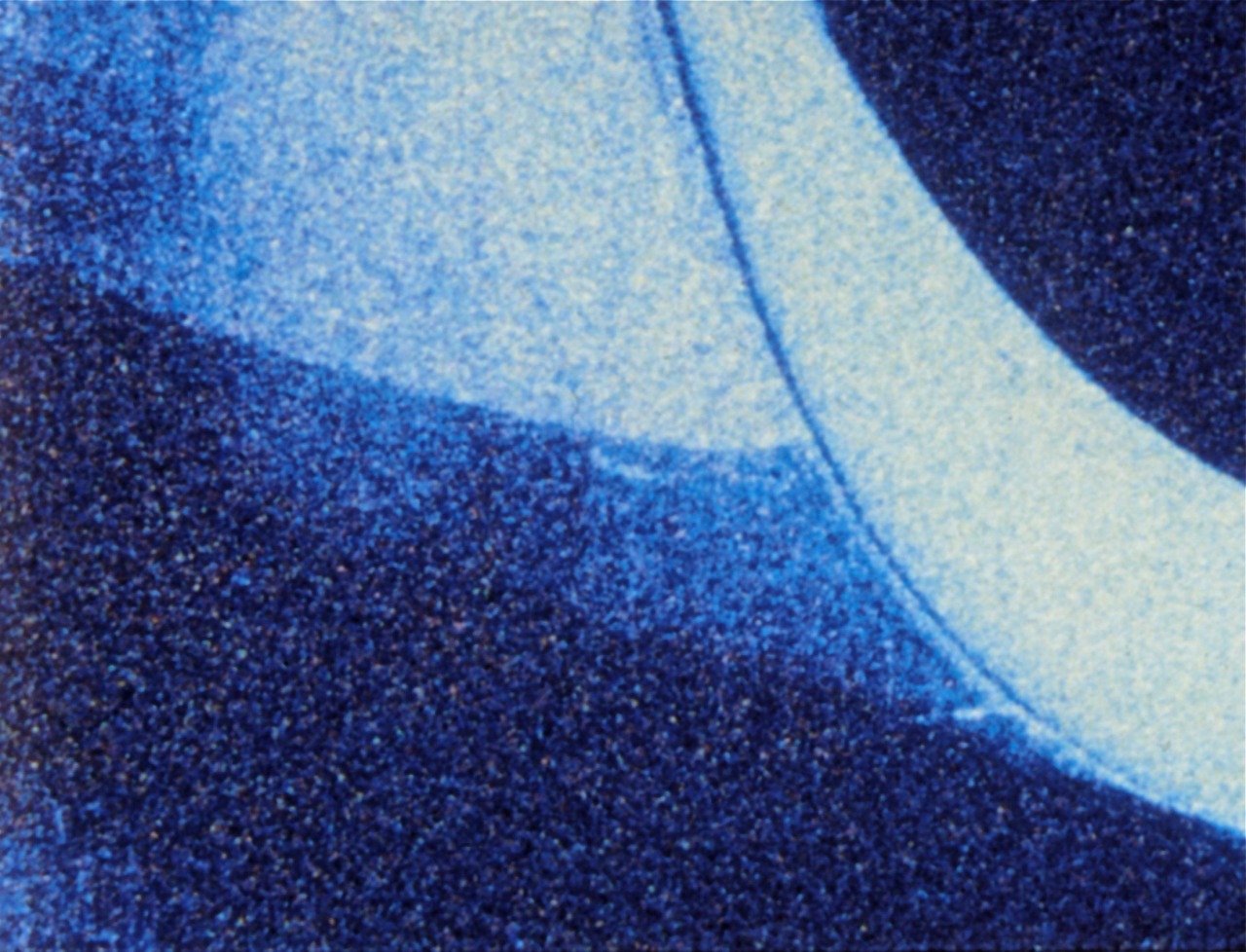
NATHANIEL DORSKY (XIII): PNEUMA
_____________
Hours for Jerome (1966-70/82)
‘This footage was shot and edited from 1966 to 1970 and then edited to completion over a two year period ending in July 1982. Hours for Jerome (as in a Book of Hours) is an arrangement of images, energies, and illuminations from daily life. These fragments of light revolve around the four seasons. Part one is spring through summer; Part two is fall and winter.’ — N. D.
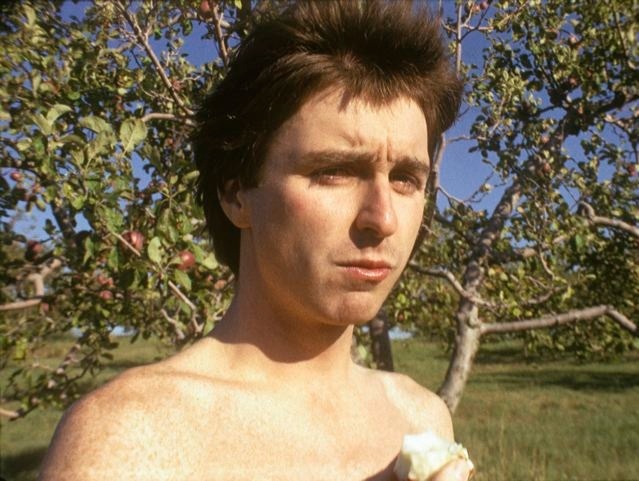
_____________
A Fall Trip Home (1964)
‘Forgetting its ‘psychological plot’ this film is a fine exponent of the intrinsic magical power of cinema. Its images, which evolve in a rather unmagical sober suburb, are continually transcended and manipulated into a kind of epic haiku of superimpositions and textural weavings.’ — Jerome Hiler (1964)

*
p.s. Hey. ** David Ehrenstein, The thanks all are mine, David! ** liquoredgoat, Hi, man. Obviously I’m really hoping the money and lodging side of things improve and settle for you as soon as possible. Those are easily two of the stressiest situations in the world, definitely for me, probably for everyone. But that’s fantastic news about your upcoming memoir/lyric essay! Let me know if you’d like me to do a ‘Please welcome to the world …’ post for it. Take care, buddy. ** Nick Toti, Hi, Nick. Got your email, as you know, and I think we’re all happily squared away. Happy early holidays. ** Steve Erickson, Hey. Ah, okay, that makes sense: how you saw ‘Barbara’. I’m glad the sound file was really useable. Sounds like you’re close. I have heard a little Pelada. I thought what I heard was very odd in a good way. I’ve been meaning to delve further, and your mention will get me there, thanks! And thank you for sharing your music list. We don’t have any sharesies this year, which is unusual, I think, although I like everything on your list that I know. My 2019 faves thing will pop up here on Wednesday. ** Misanthrope, Hi, G. Glad your mom’s birthday occasioned appropriate fun and recipient-based happiness. Yeah, see a doctor. That’s what they’re there for. Well, for that and for destroying one’s finances. Not a bad buche array this year, yeah. I’m making my short list and checking it twice. ** Corey Heiferman, Hi, Corey. Happy December. Cool about the lots of work you’re doing. Excited to watch ‘Panes’. The still representing it is my idea of promising. Everyone, blog pal and writer and filmmaker Corey Heiferman has a new short silent video art piece called ‘Panes’ that you, I, and everyone can discover and watch via the simple act of clicking these words. Very sadly for me the link to the Hanukkah donuts didn’t work. I’lll see what I can find with Google’s help. Darn. Wow, that Antarctica Scout thing is wild. Having been there, those boys really earn their little medals, that’s for sure. Thanks, man. ** Right. Today the blog focuses on the great filmmaker Nathaniel Dorsky. As you’ve seen or will, there are no embeds of his films up there to explore as he won’t let his work be seen other than on film, in person. But there are a few roundabout tasters to check out. So please give the post your all or semi-all, and do keep your eyes on your local screening situations in the hopes you’ll be able to see actually his films at some point because they’re extraordinary. See you tomorrow.





 Now available in North America
Now available in North America 